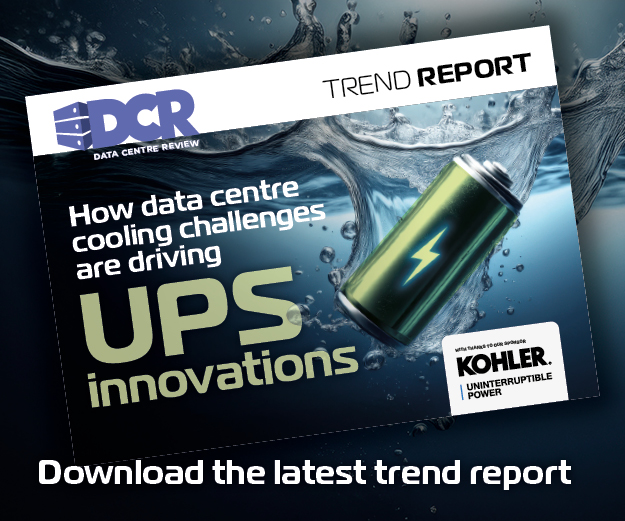Can XaaS pave the way for eco-conscious business expansion, asks Demed L’Her, CTO at DigitalRoute.
Just a couple of years ago, public cloud infrastructure seemed to be on an ineluctable path to replace private data centres. Since then, the pendulum has swung back a little, as it tends to always do in technology. In fact, in an 2022 IDC survey, over 70% of interviewed companies were considering repatriating workloads to private data centres.
No matter what the outcome of this battle between public and private infrastructure ends up being, one thing is undisputed: the public cloud and the associated emergence of mega data centres have triggered countless technology improvements.
On one hand, the trends enabled by the public cloud (and our increasing reliance on digital services) are fuelling an ever-increasing use of energy and carbon emissions. However, they are also commanding a much better use of resources. The concentration of computing power in fewer places has accelerated the demand for greater efficiency, storage density and cooling ability. Some of this progress is due to genuine environmental concerns and the growing importance of ESG objectives. But some is of course out of pure financial interest from the public cloud giants.
Public clouds have popularised the idea of sharing resources and paying for usage. These concepts have paved the way for a parallel and dependent trend that is transforming the operational landscape of modern businesses: XaaS (everything-as-a-service).
The emergence of XaaS – everything-as-a-service
XaaS is a continually evolving concept for businesses. It involves delivering any business tool or resource in the ‘as a service’ consumption model whereby solutions can be provided remotely, often on a subscription basis. The adoption of a complete XaaS business model remains limited, with only 9% of all businesses fully embracing it. However, an impressive 85% of companies are in the process stage, either experimenting with or implementing XaaS systems on a large scale.
Businesses will probably be most familiar with software-as-a-service (SaaS) that allows companies to access software applications hosted in the cloud, notable examples include Salesforce and Microsoft 365.
However, physical products and their associated services can also be XaaS models. Device-as-a-service for example provides businesses with hardware, including computers, smartphones, and other IT devices via lease or subscription. This is instead of owning products outright which tends to be more expensive.
Regardless of the product being provided as a service, the key behind any model is usage data. All XaaS companies can use usage data to better understand how customers interact with the service. The business can then introduce a usage-based billing system that means customers only pay for what they use. This is transferable across all service models.
XaaS clearly delivers a wide array of advantages to businesses across various stages – encouraging heightened productivity, enhanced efficiency, and substantial long-term cost reductions. However, one key benefit that is often ignored is its ability to help businesses become more environmentally sustainable.
Reduce, reuse, recycle – how can XaaS help product companies
We are all familiar with the famous “3 Rs” and the “reduce, reuse, recycle” mantra that originated back in the 1970s out of concerns around consumer waste. At the time, the success of manufacturing companies was measured in terms of how many physical products they could manufacture, sell and ship to end-users. Business growth meant of course producing more and more physical products. The rate at which products became obsolete went through the roof.
This is hardly a sustainable model. As consumers are becoming more eco-conscious this brings questions as to how product companies can continue to grow.
Reducing e-waste
In 2022, the UK produced the second most e-waste in the world, and shockingly, only 17% of e-waste is recycled globally. Non-biodegradable material is accumulating and being sent directly to landfill as consumers and businesses alike dispose of electronics. Yet, the rise of product-of-a-service and device-as-a-service business modelsmay suggest a way that e-waste can be reduced. By shifting ownership and responsibility of devices to XaaS businesses, waste generation can be mitigated.
Manufacturing companies have a responsibility to ensure they are sustainably disposing of devices. One of the main concerns with the disposal of electronic devices is the raw materials they contain including arsenic, mercury, and lead. When sent to landfill, these gadgets often end up leaking these materials into the soil, causing contamination.
When they switch to an XaaS model, manufacturing companies establish a continued relationship with the end-user that does not stop at purchase. There are many business advantages to this but on the environmental side this also means they can easily collect, recycle and replace the physical devices needed by the services they deliver. XaaS companies can ensure their devices are processed by specialist recycling firms they partner with, ensuring a responsible treatment of electronic waste.
This process not only is more environmentally friendly, but it also helps to reduce the demand for new raw and often rare materials. Apple has notably increased its efforts in the space, partly to increase recycling but also to address shortage of rare metals. Its success at establishing a continued connection with their customers can be traced back to their XaaS approach, with iCloud and other subscription services.
The same sustainable approach is required in all applications of XaaS – public and private – designing new applications with sustainability in mind. XaaS services inherently create new and large amounts of data. Considerable amounts of data are duplicated when it is stored in the cloud, an additional and colossal amount is siloed – 68% of data stored is never accessed again post-creation. This unused data also has an environmental impact and can be seen as digital waste.
Instead, at the transformation and build stage, organisations can build in green measures which will limit the amount of digital waste created and bake in expiry dates by which dormant data will be deleted. Google has recently introduced this to its accounts which have been inactive for two years. If the user hasn’t signed in or used a digital service or data in this long, it is highly likely they won’t at all. This reduces the amount of data storage and the associated carbon generated to store and access it, and power and cool the data centres where it is held.
Final thoughts
XaaS as a business model is now a reality, largely enabled by the rise of public cloud. Much like the adoption of public cloud infrastructure contributed to greater efficiency in our usage of computing power and associated resources, XaaS has the potential to further improve the overall environmental impact of businesses.
Besides being a proven successful business model, embraced by the fastest growing companies, XaaS should also be viewed as key element of any ESG strategy. Fundamentally, XaaS is the business embodiment of a ‘use what you need and only what you need’ no-waste philosophy.




